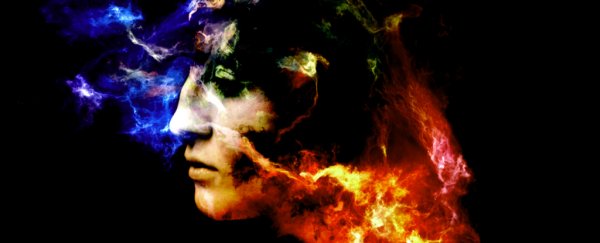For many people dealing with traumatic memories, cognitive behavioural therapy is the best shot at living an anxiety-free life, but unfortunately relapses are still common.
Neuroscientists now have a better idea of what's going on inside the brain when we revisit terrifying experiences, a find that could inspire better treatments for those with conditions such as post-traumatic stress disorder (PTSD).
The discovery was made by an international team of researchers investigating the neurology behind our ability to 'unlearn' fear.
"A common approach of cognitive-behavioural therapies to treat patients with trauma-related disorders such as PTSD is often done using exposure therapy, which is based on an experimental paradigm known as 'extinction learning'," says Roger Marek from the Queensland Brain Institute in Australia.
Training the brain to forget a bad memory doesn't erase the event from the brain's hardware, but rather simply interferes with its expression.
Most of the time this is enough to get on with life, but stressful relapses still often occur.
It's already well established that the management of these dampened extinction memories requires a part of the brain responsible for executive functions called the medial prefrontal cortex.
To drive fearful memories underground, the therapy recruits a region in the prefrontal cortex called the infralimbic cortex, and causes it to connect with the amygdala – the brain's 'fear central' – in order to inhibit certain conditioned responses to the trauma.
Under the right circumstances, at least.
For some reason context is everything, and those conditioned responses can still spontaneously emerge under different environments.
"We know that extinction memories are context dependent," says Marek.
"For example, in people undergoing exposure therapy, extinction learning takes place within a clinical setting and has been found to lead to a relapse of the fear outside of the clinic."
Previous work studying people with lesions on the hippocampus suggest this part of the brain could be involved in providing context for these memories, making it a good place for the researchers to start.
The team used mice and rats in a mix of experiments designed to test behaviours in response to learned and unlearned fears, evaluating the neurological changes by examining the formation of new pathways in areas such as the hippocampus.
What they learned contradicted previous expectations.
Models explaining relapses had typically assumed there was a loss of inhibitory control in conditioned responses. In other words, therapy fails under certain circumstances because those pathways stop working for some reason.
Instead, extinguished fears resurfaced because the brain grew a new type of bridging neuron, linking the hippocampus to the infralimbic cortex.
It wasn't a case of weakening old bridges, but the brain building new ones.
"Taken together, our results reveal a previously unknown hippocampal-prefrontal circuit for the context-dependent regulation of memory retrieval," the researchers conclude in their report.
Given areas of the brain such as the amygdala grows in response to traumatic experiences, it's hardly surprising that there is a complicated re-wiring of new pathways going on.
For now the discovery is of more use to neuroscientists than therapists, but in time it could give rise to treatments that target specific nerve types or pathways, helping us switch off traumatic flashbacks and other conditioned responses for good.
This research was published in Nature Neuroscience.
